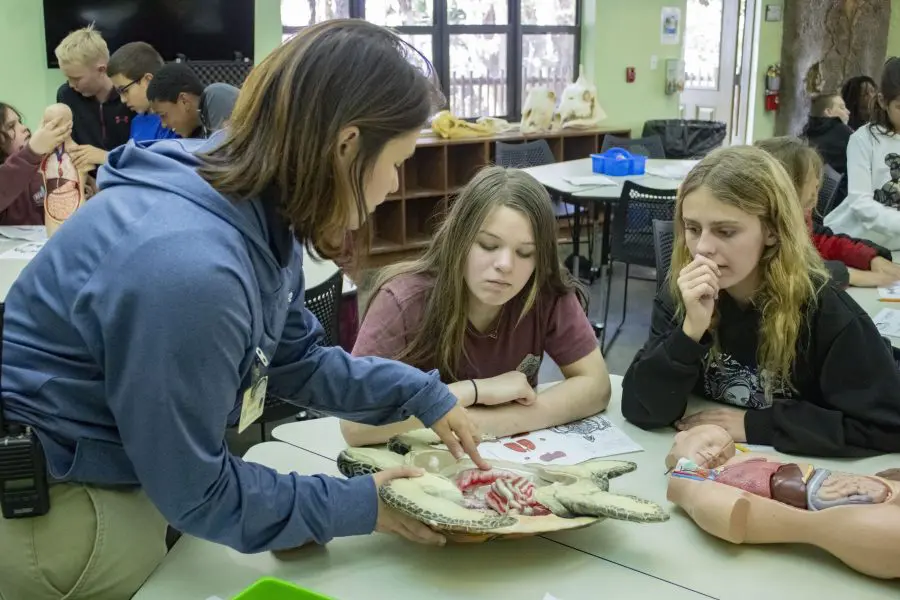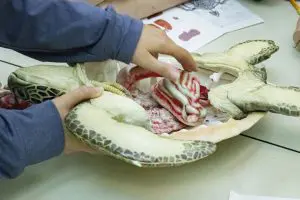

A new flippered friend is adding a splash of fun to our Conservation Learning programs. Meet “Jules,” a 3D-printed sea turtle model!
This life-size model allows students to gain a deeper understanding of the anatomy of a sea turtle. Students can lift out and inspect individual plastic bones and organs. Our Zoo is currently one of only five organizations to have a sea turtle model like this.
We want to continue to offer unique, hands-on STEM learning opportunities to our students – and this model will help us do so. Funding for Jules was generously donated by Julie Harrison and Dr. Stephen J. Watts. Thank you!
 Jules is currently being used in our Zoo School, a special program that brings area fifth graders to the Zoo for a unique classroom experience. The anatomical sea turtle now plays an important role in our comparative anatomy lesson, during which students can compare the organs of a human to a sea turtle.
Jules is currently being used in our Zoo School, a special program that brings area fifth graders to the Zoo for a unique classroom experience. The anatomical sea turtle now plays an important role in our comparative anatomy lesson, during which students can compare the organs of a human to a sea turtle.
Students so far have had positive reactions to their new learning tool, said Morgan Formicola, our school programs coordinator.
“Kids will ask if she is real and they think it is really cool to be able to use something that no one else has,” Morgan said.
In the past, our Conservation Learning teachers have used drawings and photos to impart this lesson.
“So many more kids benefit from having a tactile experience,” Morgan said. “Jules helps us take an abstract concept and bring it into reality. This is the closest we are ever going to get to the kids being able to see a real sea turtle’s organs.”
All our formal school programs align with Florida school standards, and this program highlights the benefit of models in science, identifying organs and their functions, and comparing the anatomy of different living things.
“However, I think one of the most important and broader lessons students will take away from this experience is empathy,” Morgan said.
Most people don’t consider themselves animals, but we are, Morgan said. A lot of animals, especially reptiles, are considered less important or substandard to people, but that isn’t the case. Everything plays an important role in our ecosystem.
“When kids are able to see first-hand how similar we are to other animals – even something as obscure and different from us as a sea turtle – they develop a level of empathy that makes it much easier for us to teach them why it is important to take care of our wildlife and help with local and global conservation efforts,” Morgan said.
Our Conservation Learning team has plans to use Jules as a core component of our new Learning Lab launching in the fall, “Anatomy of a Rescue.” In this program, students will learn about anatomy and physiology along with applied biology by examining case studies of our rescue patients like sea turtles and manatees.
We hope to use our unique Zoo stories to continue connecting students with the application of science. We can’t wait to show you how Jules is used next!
Interested in supporting Conservation Learning? Contact philanthropy@bz.org to learn more!
Brevard Zoo is an independent, not-for-profit organization that receives no recurring government funding for our operating costs. Your generous support enables us to continue to serve our community and continue our vital animal wellness, education and conservation programs.